- Author Arianna Cook [email protected].
- Public 2023-12-17 14:23.
- Last modified 2025-01-23 09:40.
The most common misconceptions about acne that prevent getting rid of them. Is it possible to crush acne, what is it fraught with? 6 myths because of which the fight against rashes remains unsuccessful.
Acne myths are the most common beliefs that keep them from getting rid of breakouts quickly and effectively. If in adolescence there is still hope that the skin will soon clear up, as soon as the hormonal storm subsides, then adults often simply give up. And it is completely in vain: you can and should say goodbye to 6 myths about acne and about squeezing them out in order to successfully fight them.
Squeezing out pus is the right decision
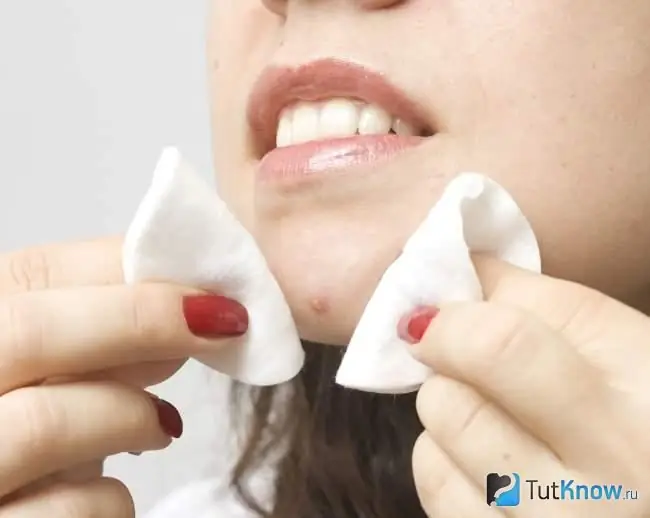
There are numerous myths about acne, and they are led by the persistent belief that popping is the surest way to heal breakouts. The adherents of this method of struggle put forward the main argument in its favor: this is a great way to eliminate pus from a pimple. On the one hand, the belief seems logical and natural. On the other hand, everything is not as simple as we would like. To figure out what actually squeezing acne on the face is fraught with, you will have to get to know them better.
A common pimple or pustule is nothing more than an inflamed sebaceous gland. It increases in size, and due to inflammation, pus is formed in it. In fact, bacteria live here that feed on sebum.
The sebaceous gland is a kind of tube that goes through the thickness of the dermis to the surface of the skin. Sometimes its length reaches several centimeters! So the root is much deeper than it seems. If the inflammation proceeds throughout the entire depth of the sebaceous gland, squeezing out a pimple with pus does not at all mean solving the problem.
In attempts to mechanically remove pus from a pimple, it is very easy to harm rather than help the skin. Because with this effect, the exudate often moves in two directions. It sticks out upward, and we are glad that the pus comes out. But under the skin, at the same time, there may be a movement of the contents of the pimple in the opposite direction. That is, pus penetrates downward under our pressure. Due to inflammation, the walls of the sebaceous gland become thinner and fragile. So a relatively light pressure when trying to pop a pimple on your face is enough for it to burst. This would not have happened if it had naturally matured!
In addition, swelling occurs in the tissues as a result of mechanical trauma, which is inevitable when a person simply starts to press acne and blackheads with his nails. In fact, because of this, the mouth of the sebaceous gland is pinched. It shrinks, so that the natural process only slows down. Perhaps a couple more days, and the pus would have burst out on its own. But instead, the squeezed out pimple swells, the exudate lingers in the tissues, the inflammation increases, the condition worsens.
The most dangerous thing happens when pus enters the bloodstream after squeezing out the pimples. In this case, the infection spreads throughout the body. It is for this reason that numerous new rashes appear in the place of one innocent pimple. Sometimes just one pustule grows into a whole conglomerate of acne.
If you gently squeeze out the pimple, it will heal faster

For many people, rashes on the forehead or in other areas are terribly annoying in their appearance. It is unpleasant to watch how the pustule changes just before our eyes. It increases, the place turns red, then begins to turn white - ripening is about to occur, after which the pus will break through the tissue and come out. At such moments it seems that it is simply impossible to sit idly by: you need to help the body on your own!
However, with an understanding of how the skin is arranged, what are the features of the processes that take place in it, there comes an understanding of what actually entails squeezing out acne and blackheads. This is nothing more than a violation of the integrity of tissues, and even the deeply lying dermis is damaged. Trauma inevitably leads to healing, which is accompanied by the appearance of scars.
What kind of scars will be, not a single specialist can predict. In the best case, you get the so-called normotrophic scar. That is, the fabrics will gradually align with the surrounding surfaces. But the formation of so-called hyper- or hypotrophic scars often occurs. This means that there will be either a protruding bump or a depression on the skin.
Squeezing out inflamed acne for the body means one command: it is necessary to restore tissue as quickly as possible. For this reason, accelerated collagen production is triggered. On the one hand, this is good. But, on the other hand, given the unnatural course of events, it is not known how the process will end.
Popping acne is dangerous but not fatal
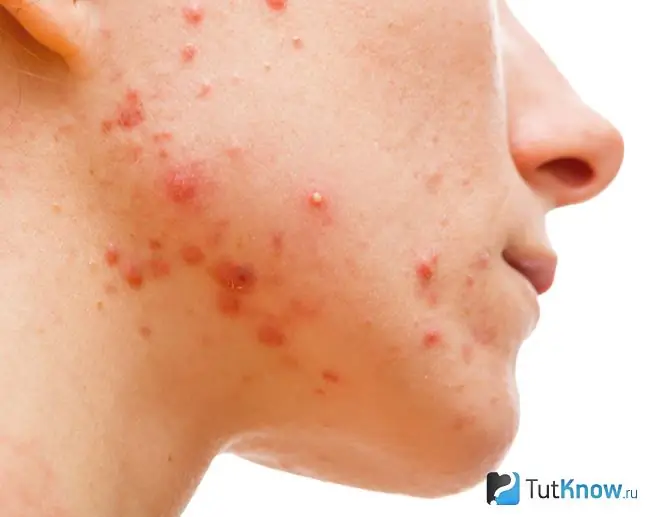
Of course, first of all, rashes on the face irritate and annoy. However, if pustules appear on the body, this is also unpleasant. And with them, many craftsmen fight themselves, successfully squeezing out. But not fully understanding why you should not press acne on your face. The skin is the same everywhere, as it seems at first glance.
First, it is not at all true. Skin integuments differ in different places on the body in their structure and density, and other characteristics. Secondly, it is impossible to press acne on the face also because of the specificity of the blood supply in this area.
First of all, it is worth knowing that arterial blood enters the tissues of the face directly from the carotid artery and its branches. In fact, its path to the branched small capillaries is very short.
The vascular network is branched, large great vessels are combined with small superficial so-called anastomoses. At the inner edge of the eye, we have a junction between the large facial vein and the orbital veins. The same junction unites the orbital veins with the pterygoid venous plexus. In fact, this is an integral system, that is, if there is an infection in the blood, it spreads instantly to a variety of tissues. This is why pimples cannot be squeezed.
Note! It is very dangerous if bacteria enter the intracranial sinuses: the dura mater is at risk. This is a direct risk of the onset and development of sepsis!
These are not horror stories at all, as many people are used to thinking, who still doubt whether it is possible to squeeze out acne. By the way, in the history of mankind there are many examples when such a simple and innocent, at first glance, manipulation led to a tragedy. The most famous and sensational case is the absurd death of the famous Russian composer and pianist Alexander Scriabin. As you know, he died very young - at 43, during the prime of his life and creativity. And the worst thing is that death came immediately after the squeezing out of a small pimple that appeared under the nose. Immediately after this, sepsis developed with lightning speed. Alas, the talented musician had no chance to survive.
Of course, one can argue, they say, then antibiotics did not exist yet. Today you can safely squeeze acne and acne! After all, Scriabin died in 1915, and Alexander Fleming discovered penicillin only 13 years later. But is this a reason to expose yourself to mortal danger?
If you have alcohol on hand, nothing bad will happen
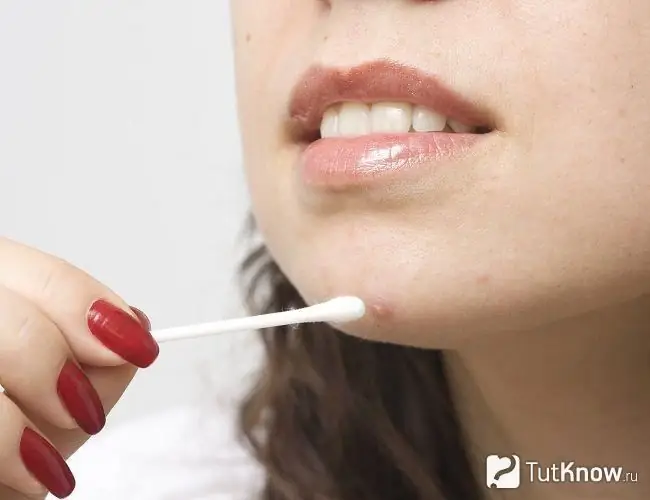
By the way, squeezing acne and blackheads is nothing more than an invasive intervention. When it comes to surgery, people understand that everything must be sterile. But for some reason, they are very frivolous about breaking the skin with their own hands. More precisely, they rely with all their hearts on the power of ordinary alcohol. Like, I will wipe the skin and squeeze acne - no infection threatens me.
If everything were that simple, surgery would also be content with minimal measures. As in cosmetology: it is enough to go to a professional face cleansing once to make sure that the specialists act very carefully, trying to achieve sterility. Indeed, in such conditions, only invasion is permissible. Otherwise, the risks of introducing infection into damaged tissues are too great, which is fraught with the spread of inflammation, not to mention the threat of sepsis.
Squeezing out oily pimples and other rashes at home is contraindicated for this very reason. Since it is impossible to achieve absolute sterility, new bacteria and fungi can join the initial infection. By the way, the probability of "neighborhood" of Staphylococcus aureus is very high.
This microorganism is capable of triggering such an unpleasant phenomenon as furunculosis. This is an inflammation of the hair follicles, which is not so easy to get rid of. Moreover, it tends to spread throughout the body. Having a habit of squeezing pimples on the nose, you can start a complex and unpleasant process when boils go down the face, then "jump" onto the neck, forearm, and fall below. Furunculosis is difficult to treat: you have to drink antibiotics, see a doctor.
It is also worth remembering the insidiousness of alcohol. Of course, this tool is capable of removing microflora. It acts on the protein coat of pathogenic microorganisms. Due to its destruction, bacteria, viruses, fungi die.
However, if you regularly squeeze pimples and acne with rubbing alcohol, you will notice how it will inevitably get worse. Dryness and irritation occurs. One meticulously squeezed out pustule turns into a whole chain of rashes.
All this is explained by the following effects:
- Alcohol destroys positive microbiota. These are the beneficial microorganisms that are important for skin health and are necessary to maintain a balance between “bad” and “good” bacteria.
- Acting in a destructive manner on protein structures, alcohol also harms directly human tissues. After all, in fact, they also consist of protein.
- Due to the constant overdrying caused by alcohol, the production of sebum is disrupted. This leads to a vicious circle: inflammation follows irritation, natural defense mechanisms do not work properly.
By the way, not everyone knows or remembers such a property of alcohol as an increase in tissue photosensitivity. In simple terms, they become sensitive to sunlight. If you use alcohol formulations on a regular basis, especially in the sunny season, age spots will inevitably appear. Since tissue dehydration occurs in parallel, the aging process is accelerated. Therefore, if you squeeze out purulent acne, relying on the miraculous power of alcohol as a disinfectant, then not in sunny weather, or after waiting a while before going outside.
The beautician can - and I can
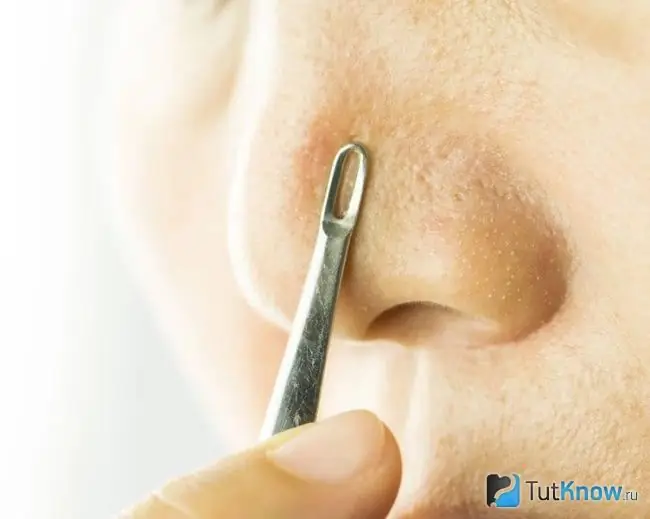
During professional facial cleansing, the beautician deals with various problems. Including, he competently handles rashes. Some clients of beauty parlors try to memorize the order and features of such procedures, believing that then it is possible to squeeze out acne at home, only adhering to this algorithm.
If everything were that simple, there would be no need to turn to professionals. And first of all, difficulties arise for ordinary people for the simplest reason: everything that a person pours out on his face only at first glance seems like an ordinary pimple. In fact, a variety of problems appear on the skin, including the consequences of diseases of the internal organs. So it's fundamentally wrong to just squeeze out a pimple and forget about it, as if nothing had happened.
Only by the appearance of the rash, by the nature of the pustules, the cosmetologist or dermatologist will be able to conclude how to deal with the problem. You cannot crush acne, acting on the same principle. There are various skin defects on the face, and each of them requires its own approach:
- Open blackheads and closed whiteheads or comedones … This is nothing more than the sebaceous glands, clogged with dead skin cells, sebum, propionic bacteria. If they are black, this is not dirt at all: it is just that the open sebaceous gland is exposed to contact with oxygen. As a result of oxidation, its contents darken. Whiteheads do not change color, as they hide under the skin.
- Papules and pustules - what ordinary people used to call common acne … A clogged pore or sebaceous gland becomes inflamed, causing it to turn red. Often there is a painful sensation, and even a squeezed pimple hurts. As suppuration progresses, a dense ball forms at the apex of the base.
- Cysts and nodules are considered to be a severe form of pustules and papules.… The former are very dense and painful nodules that lie under the skin. Cysts differ in that they are filled with pus. Both the first and the second are tougher to the touch, unlike regular acne. Moreover, they are characterized by severe pain and inflammation with concomitant symptoms.
Due to the wide variety of rashes, it makes no sense to learn how to properly squeeze acne, spying on the work of a beautician. The fact is that in many situations, at a cursory first glance, it will not be possible to determine what kind of skin defect it is. Meanwhile, the approach to its processing is determined by what it is - a pustule or a papule, a cyst or a nodule.
In addition, squeezing black pimples without special tools is an increased risk of damaging the tissue structure, disrupting the natural regeneration processes taking place in the skin. For example, doctors have special spoons and loops for comedones. If we are not talking about an innocent papule, but about a nodule or a cyst, a professional makes a decision on therapy, sometimes prescribing injections, or even involving surgical instruments.
If you are careful, then you can
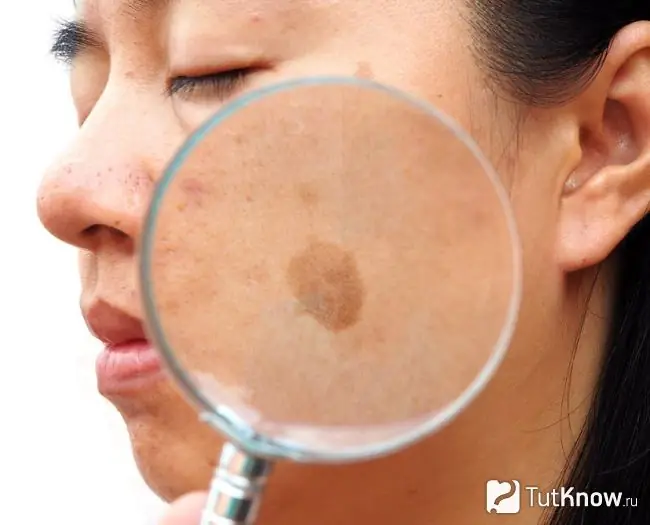
Some people are very frivolous about rashes, believing that it is enough to act carefully and carefully so as not to harm. They don't even wonder if acne can be squeezed. They just try not to put too much pressure on the skin, repeatedly treating their hands and papules with alcohol or other disinfectants.
Professionals, on the other hand, talk about the inadmissibility of such events. No matter how carefully it turns out to squeeze purulent acne, microcracks and abrasions remain on the skin from the nails. And this is an open gateway for the penetration of infection and a prerequisite for the appearance of post-traumatic pigmentation.
If you wield your hands without understanding the structure of the skin and the processes that take place in it, as a result, so-called stagnant spots appear. This is nothing more than tissues where microcirculation of blood is impaired. Such marks sometimes remain for several weeks, but can linger on the skin for many years. This is worth remembering before squeezing out a subcutaneous pimple.
Is it possible to squeeze acne - look at the video:

Cosmetologists and dermatologists do not just urge to use the services of professionals if defects appear on the skin. After all, when a tooth or ear hurts, people go to the doctor, but for some reason they crush acne with their own hands. It is better to trust specialists who will use disinfecting and anti-inflammatory drugs, use tools and even equipment, if necessary.






